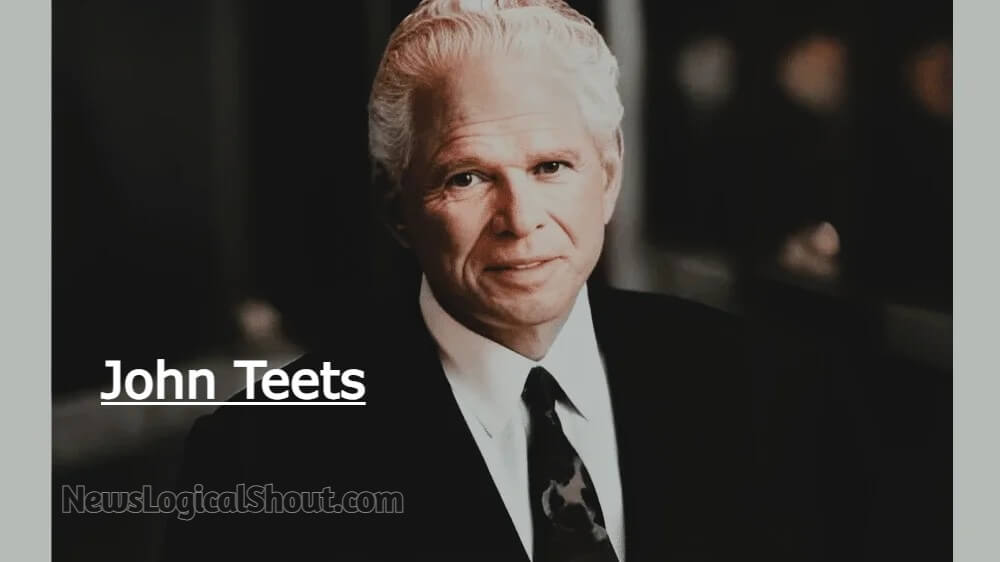Introduction
John Teets was a visionary American businessman best known for leading Greyhound Corporation through a major transformation. His leadership helped reshape a transportation brand into a diversified powerhouse.
This article explores his early life, career, business strategies, and the lasting impact he left on corporate America.
Early Life and Background
John W. Teets was born in 1931 in Chicago, Illinois. He grew up in a working-class family and developed strong values of discipline and ambition.
As a young man, Teets worked several jobs while studying at DePaul University. He learned early the importance of hard work and smart leadership.
Starting His Career
Before joining Greyhound, John Teets held various management roles in food service and hospitality. He worked his way up in companies like Armour & Company and Marriott.
These early roles gave him hands-on experience in operations and customer service, which became essential later in his career.
Teets Joins Greyhound Corporation
In 1969, John Teets joined Greyhound Corporation as part of its food service division. His strong performance quickly earned him promotions.
By 1977, he was named president of the division. Just a few years later, in 1982, he became CEO of the entire Greyhound Corporation.
Redefining Greyhound’s Identity

When John Teets became CEO, Greyhound was primarily known for its bus lines. But the bus business was declining due to competition and changing travel habits.
Teets had a bold vision: to transform Greyhound from a transportation firm into a diversified services company.
Key Business Moves Under His Leadership
John Teets led Greyhound through major acquisitions and restructuring efforts. One of his most strategic decisions was acquiring Dial Corporation in 1985.
Under his leadership, Greyhound divested its bus line and expanded into consumer goods, food, and retail through the Dial Corp brand.
Spinning Off Greyhound Bus Lines
In 1987, Teets made the bold decision to sell off Greyhound Lines, the core bus transportation business. This was controversial at the time.
But he saw it as essential to the company’s long-term survival. The company then rebranded and focused on high-growth sectors.
Creating The Dial Corporation
After the divestiture, the company became known as The Dial Corporation, focusing on products like soap, air fresheners, and packaged foods.
John Teets successfully led the transformation, making Dial a well-known name in American households.
Teets’ Leadership Style
John Teets was known for being a strong, decisive leader with a clear vision. He believed in innovation, calculated risk-taking, and treating employees with respect.
His leadership style was both practical and forward-thinking, helping him navigate turbulent economic times.
Challenges Faced by John Teets
Leading Greyhound through a massive business transformation wasn’t easy. Teets faced resistance from investors and skepticism from industry analysts.
But his ability to adapt and make tough decisions helped the company survive and thrive in a changing market.
Awards and Recognition
Throughout his career, John Teets received multiple awards for his business leadership. He was featured in top financial publications and praised for his bold strategies.
His efforts were seen as a model for how old-line companies could reinvent themselves.
Retirement and Legacy
John Teets retired in 1997 after nearly two decades at the helm of Greyhound/Dial. His retirement marked the end of an era for the company.
He left behind a legacy of transformation, proving that strong leadership could redefine a company’s path.
Lasting Impact on Corporate Strategy
Many companies followed the example of Teets’ restructuring strategies. He became known as one of the first CEOs to aggressively refocus a brand’s core identity.
His decisions helped shape modern corporate thinking about diversification and brand renewal.
Influence on American Business
John Teets’ impact went beyond just one company. He helped inspire a wave of corporate leaders to think bigger and embrace innovation.
He also supported education, philanthropy, and workforce development throughout his career.
Remembering John Teets Today
John Teets passed away in 2011, but his story continues to inspire business professionals and entrepreneurs.
He is remembered not only as the man who reshaped Greyhound but also as a bold thinker who wasn’t afraid of change.
What We Can Learn from John Teets
Teets’ story teaches us the value of strong leadership, clear vision, and the courage to make tough decisions. He wasn’t afraid to break with tradition.
In a time of rapid change, his actions showed how a company could evolve and stay relevant.
Quotes from John Teets
While Teets was known for action more than words, a few quotes summarize his thinking:
- “You must adapt or fade away.”
- “Our job is not to protect the past—it’s to build the future.”
These lines capture the essence of his leadership.
The Legacy of Greyhound’s Transformation
Thanks to John Teets, Greyhound’s legacy is not just about buses but about bold innovation. The brand became a case study in business schools.
His transformation helped preserve jobs, shareholder value, and corporate relevance for decades.
Final Thoughts
John Teets was more than a CEO—he was a corporate visionary who helped an iconic American company evolve with the times.
His story is a testament to the power of bold ideas, strategic change, and effective leadership in shaping the future of business.
FAQs
1. Who was John Teets?
John W. Teets was a U.S. business executive known for leading Greyhound and transforming it into The Dial Corporation.
2. What did John Teets do at Greyhound?
He restructured the company, sold the bus division, and expanded into consumer goods, creating a modern diversified corporation.
3. When did John Teets become CEO of Greyhound?
He became CEO in 1982 and served until his retirement in 1997.
4. Why is John Teets important?
He is considered a pioneer in corporate transformation and is praised for his visionary leadership.
5. What was his leadership style?
Teets was known for bold decisions, strategic thinking, and valuing innovation and employee engagement.


